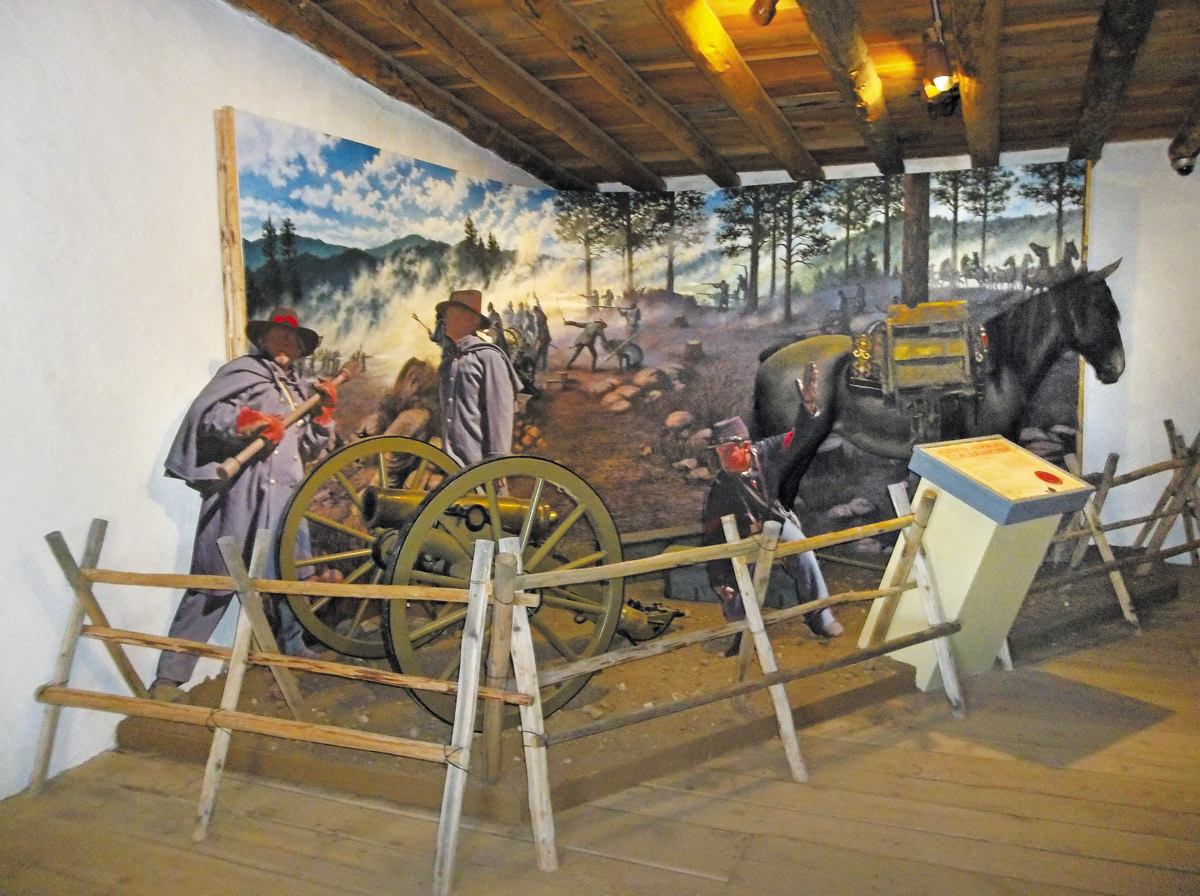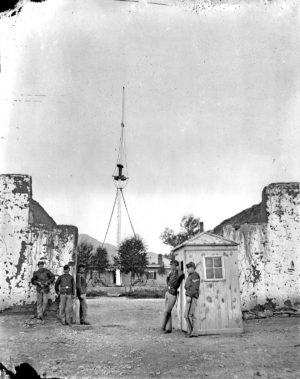
By Anita McDaniel
Western expansion fueled the need for frontier forts. The primary purpose of these forts was to keep the peace between the settlers and the indigenous people.

In 1852 the U.S. government saw the need for a military presence in the San Luis Valley and built Fort Massachusetts, the area’s first stronghold. It soon became clear that the location of Fort Massachusetts was not strategically practical. It was vulnerable to attack from higher ground and it was too far from the settlers it was intended to protect. Brig. Gen. John Garland issued orders for a new post to be built six miles south between the Ute and Sangre de Cristo creeks, and it was named Fort Garland.
The fort is built of adobe or mud bricks, the local building material at the time. Exterior walls were plastered with mud; interior walls were plastered with mud and lime. Soldiers and local skilled laborers built the fort under the direction of Charles Autobees. The flat roofs were constructed using large log beams called vigas with wood planks on top and then covered with dirt. The fort was completed in June of 1858; the flag was lowered at Fort Massachusetts and Capt. Duncan marched his men to the new site where the flag was hoisted to the top of the new flagpole.
Early in the Civil War, Colorado Volunteers were mustered in and trained at Fort Garland. In March of 1862 they trekked through harsh winter conditions to join the New Mexico Volunteers, and the combined force met the Confederates at the Battle of Glorieta Pass. The Union soldiers thwarted General Sibley’s efforts to bring the Civil War to the far West.
After the Civil War, from 1866 to 1867, Christopher “Kit” Carson commanded the New Mexico Volunteers at Fort Garland. Drawing on his knowledge of American Indian languages and culture, he aided Ouray and other Ute leaders in the negotiations for peace between tribes and settlers in the valley that lasted more than a decade.
African-American cavalrymen, the famed “Buffalo Soldiers,” distinguished themselves at Fort Garland between 1876 and 1879.
[InContentAdTwo] Fort Garland was in use for 25 years, a long time for a frontier fort. The coming of the railroad and the removal of American Indians to reservations brought Fort Garland’s 25 years of service to an end in 1883.
Today, the fort tells the story of the people who lived here during those 25 years. Exhibits focus on major events at the fort and on the everyday lives of the soldiers, officers, women and children who lived at the fort. Fort Garland Museum offers educational programs for children and adults, re-enactments and hosts community events. The gift shop features an excellent selection of gift items and books on Colorado and the West. The museum is located at 29477 Highway 159, just south of Colo. Hwy. 160 in Fort Garland. For more information about the museum, programs and events call 719-379-3512.
Anita McDaniel is the director of the Fort Garland Museum.


